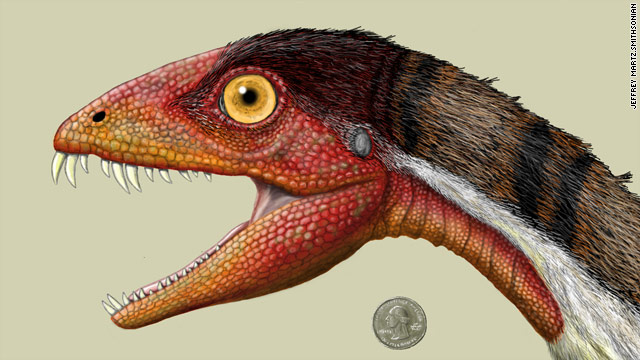|
Creato da: diegobaratono il 02/05/2008
NEW ARCHAEOLOGY, SCIENZA, ARCHEOLOGIA SPERIMENTALE, RICERCHE ARCHEOLOGICHE D'AVANGUARDIA, NEWS DAL MONDO, EGITTOLOGIA, EGYPTOLOGY, ARCHEOASTRONOMIA, PALEOGEOMETRIA, CRIPTOGEOMETRIA, CULTURAL GEOMETRY, GEOMETRIA CULTURALE, ARCHITETTURE SACRE
|
Area personale- Login
TagCerca in questo BlogMenuCitazioni nei Blog Amici: 8 Contatta l'autore
Chi può scrivere sul blog
Solo l'autore può pubblicare messaggi in questo Blog e tutti possono pubblicare commenti.
I messaggi e i commenti sono moderati dall'autore del blog, verranno verificati e pubblicati a sua discrezione. LINK DA CONSULTARE - LiriciGreci.org - Egittophilia - Egittologia.net - Pyramidales - WORLDTRUTH - Bibliotheca Alexandrina - Osservatorio virtuale - INAF-Osservatorio Astronomico Torino - Giza Plateau Mapping Project - AERA, Ancient Egypt Research Associates - Il Museo Egizio di Torino - Il Museo Egizio del Cairo - Ecco il Louvre - Ecco il British Museum - Musei Vaticani - Egyptians Gods - Previsioni meteo - Insolazione - California Institute of Technology - Astrocaltech - Geologicaltech - A tutto Caltech - Massachussetts Institute of Tecnology - Ecco gli Uffizi - Istituto Nazionale di Geofisica e Vulcanologia - Terremoti in tempo reale - MONITORAGGIO TERREMOTI REAL TIME - ESA (Agenzia Spaziale Europea) - NASA - LIETI CALICI - LIETI CALICI II - Science - ScienceNews - C.N.R. (Consiglio Nazionale delle Ricerche) - Moon Phases - Ordine Cisterciense - Abbazia di Casamari - Abbazia di Fossanova - Abbazia di Staffarda - Abbazia di Morimondo - Pompei - Ercolano - Amalfi - Tutto Darwin - Tutto Lyell - Ordine Templare - Politecnico di Torino - Università Amedeo Avogadro di Alessandria - Università di Oxford - Università di Cambridge - Isaac Newton - Albert Einstein - A tutta birra - A tutta birra II - Tutto Mendel - LIETI CALICI III - Abbazia di Tiglieto - Abbazia di Chiaravalle - The heritage - key - CERN European Organization for Nuclear Research - Science Daily - A caccia di meteore ... - World Digital Library - Library of Congress - Antikitera News - BIBLIOTECA DIGITALE ITALIANA - Il giornale di Galileo - Galileo Galilei - Enciclopedia Egittologica on line - Scienze cartografiche - El - Giza pyramids - Caravaggio - REUTERSNEWS - CNNNEWS - ANSANEWS - English Heritage - NATURE - ENCICLOPEDIA TRECCANI ONLINE - ENCICLOPEDIA BRITANNICA ONLINE - EGYPTIAN ARCHAEOLOGY - PRINCETON UNIVERSITY - NationalGeographicNews - RELIGIONI A CONFRONTO - USHEBTIS EGIPCIOS - Talking Pyramids - LIETI CALICI IV - Sito di ...vino - La Banca del Vino - MATHEMATICA ON LINE - ARKEOMOUNT - Egyptians Gods II - TESTI DELLE PIRAMIDI - DAVID ROBERTS - COLLEZIONI INTERNAZIONALI ON - LINE - LIETI CALICI V - GEOMETRIA SACRA - IPSE DIXIT - THE GRIFFITH INSTITUTE - ARCHIVIO SEGRETO VATICANO - ABBINAMENTI VINO CIBO |
Post n°822 pubblicato il 13 Aprile 2011 da diegobaratono
Da:"CNN.com" New dinosaur species is a missing link  April 12th, 2011 07:15 PM ET This dog-sized, ferocious-looking critter is called Daemonosaurus chauliodus, which means something along the lines of “buck-toothed evil lizard,” says Hans-Dieter Sues, lead author of the published research describing this dinosaur, and curator of vertebrate paleontology at the Smithsonian's National Museum of Natural History. The illustration above compares the head and neck with a quarter. You can see that it has a short snout and enormous front teeth. Scientists found the skull and neck of this previously unrecognized dinosaur, and described it in a study in the journal Proceedings of the Royal Society B. This dinosaur provides a link between what paleontologists consider "early" and "later" dinosaurs. There's a gap in the fossil record between the oldest known dinosaurs, which walked or ran on their hind legs about 230 million years ago in Argentina and Brazil, and other predatory dinosaurs that lived much later. Daemonosaurus chauliodus helps fill in a blank in dinosaur history. This newly discovered species lived about 205 million years ago, and probably preyed on other dinosaurs and other small animals, Sues said. At that time, what is now the American Southwest was located close to the equator, so it was warm and monsoon-like with heavy seasonal precipitation. This dinosaur was probably active during the day, although its large eyes suggest it could have seen at night as well. How did it go extinct? It may have fallen victim to an extinction event that occurred about 200 million years ago. As the continents were separating, there was a large zone of volcanic activity. Enormous quantities of lava was released, doing "horrible things to the atmosphere." Most dinosaurs made it through (that is, until an asteroid struck around 65 million years ago), but perhaps not this one. "It just shows that even here in the United States, there are still many new dinosaurs to be found," Sues said. "People always think we have to go to some remote places, but, right here in northern New Mexico, we can still find new dinosaurs."
|
||||||||

